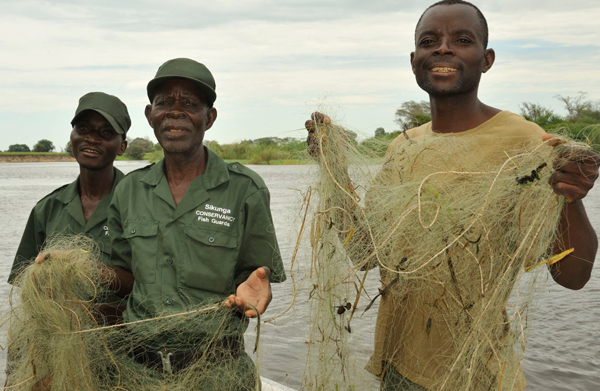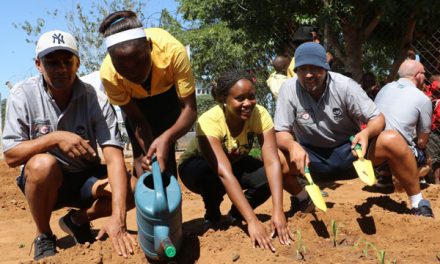
New regulations protect Caprivi fisheries

Freshwater or inland fish resources, although negligible in its contribution to the formal economy, has huge potential to become a commercialised commodity. Freshwater fish is also an important source of protein for many communities in the Zambezi, Kavango and Kunene areas.
According to the Namibia Nature Foundation (NNF), Namibia’s inland fisheries has the potential to generate 5000 tonnes a year of high quality protein through sustainable fisheries management.
Moving to protect this resource the Ministry of Fisheries and Marine Resources, during December 2016 announced three new regulation to protect freshwater fish in certain areas, and during the spawning period.
“Firstly the ministry has banned the use and sale of monofilament nets. This is a major step forward and if correctly enforced will, on its own, have major positive implications for fisheries and wildlife in Namibia” stated Angus Middleton, the Executive Director of the Namibia Nature Foundation this week.
He continued “Secondly the ministry has gazetted the Kasaya Channel as a Fish Protection Area. This includes the entire channel between the banks where it leaves the main Zambezi River course and the entrance to where the channel exits into the Chobe River. This formalises an earlier gazetting and adds to the existing Sikunga Fish Protection.”
“Finally the ministry has declared the Zambezi/Chobe River system in the Zambezi region as fisheries reserve with a closed season 1st of December to 28th of February. Initially this included catch and release recreational angling, but following interventions by the NNF the catch and release prohibition will only be in the month of February, allowing lodges and communities to benefit from recreational fishing tourism in the December and January Period. This overlaps with the Zambian closed season and thus allows for simpler enforcement and greater protection” Middleton elaborated.
While the demand for freshwater fish is growing fast, wild populations are stable or declining due to over-exploitation. To deal with this demand there was a surge in aquaculture, which now provides half of all fish for human consumption. Fish is one of the most traded food commodities in the world and half of this demand originates in developing countries.
In recognition of the importance of inland fisheries in Namibia, the Namibia Nature Foundation, with a multitude of donors and partners, has worked for well over a decade to understand the issues and promote solutions. The current European Union funded project, Community Conservation Fisheries Project in the KAZA (Kavango-Zambezi Trans-frontier Conservation) Region is a large trans-boundary project that emerged from a series of NNF projects that began in the early 2000s.
Stated the NNF “These three regulatory moves, if enforced, have the potential to greatly enhance inland fisheries management, so where to next?”
The Ministry of Fisheries and Marine Resources have shown great leadership in their actions with regard to regulations, for which we applaud them. But these regulations need to be acted upon and the ministry should take on greater regional diplomacy to have similar regulations adopted in our neighbouring countries and within the Zambezi basin. We also have much more work to do in bringing on board the many communities to co-manage their fisheries not just in Namibia but in the region. Finally we have a lot of work to do in managing the life supporting international waters of the Okavango, Kwando & Zambezi systems.”













































